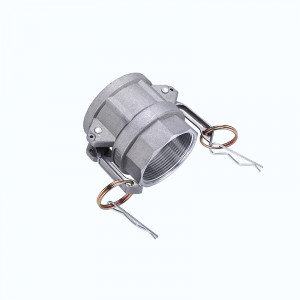Camlock fittings are a type of industrial fastener that is becoming increasingly popular in the manufacturing industry. In this blog post, we will explore the manufacturing process of camlock fittings and help you understand how they work. By understanding the manufacturing process of camlock fittings, you will be able to choose the right fitting for your application and avoid potential troubles down the line.

Types of camlock fittings?
There are a few types of camlock fittings, each with its own benefits. Hose couplings are the most common type and are used to connect two pieces of tubing. They feature a standard male/female connector and can be used to transfer water, gas, or oil between systems. Schrader valves are also commonly used for transferring fluids, but they come in a variety of shapes and sizes. They are typically used to control the flow of fluid in systems with multiple taps or outlets. Finally, ball valves are available in both open and closed positions and can be used to control the flow of fluid only in one direction.
The manufacturing process of camlock fittings
Camlock fittings are one of the most common types of fittings in the industrial and construction markets. Camlock fittings are made up of two parts: the cam and the lock. The cam is a piece that rotates around the lock, while the lock maintains a tight seal around it. This allows for fluid movement without leakage.
To manufacture camlock fittings, first, the cam must be manufactured. This part is usually manufactured from a metal or plastic alloy. Next, the lock must be manufactured. This part can be made from different materials, but typically it is made from brass or steel. Together, these two parts create a fitting that can connect fluids together in many different ways.
To create a Camlock fitting, welders will use an arc welder to create a joint between the cam and lock pieces. They will also use a mig welder to make larger joints between these pieces. Once both pieces have been welded together, they will then use a pin punch to form holes in each piece that match up with each other perfectly. Next, they will use rivets to hold these holes in place and complete the fitting process.
In Union Metal, a camlock fitting is manufactured technically and professionally. What’s more, Union Metal offers more competitive prices and timely customer service.
The benefits of using camlock fittings
Camlock fittings are a type of plumbing adapter that was originally designed for the oil and gas industry. Camlock fittings have several benefits over other types of plumbing adapters, including:
Camlock fittings are resistant to corrosion.
Camlock fittings are easy to use.
Camlock fittings can withstand high pressure and temperatures.
Conclusion
Camlock fittings are a critical part of any hydraulic system, and it’s important to know about the manufacturing process in order for you to purchase the correct fitting. This article provides an overview of the camlock fitting manufacturing process, including information on the types of parts that are used in this design, how those parts are put together, and what factors influence performance. Armed with this knowledge, you will be able to make informed purchasing decisions when selecting a camlock fitting for your project.


Leave A Comment